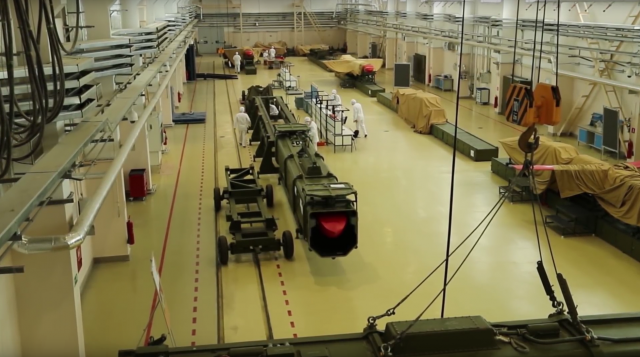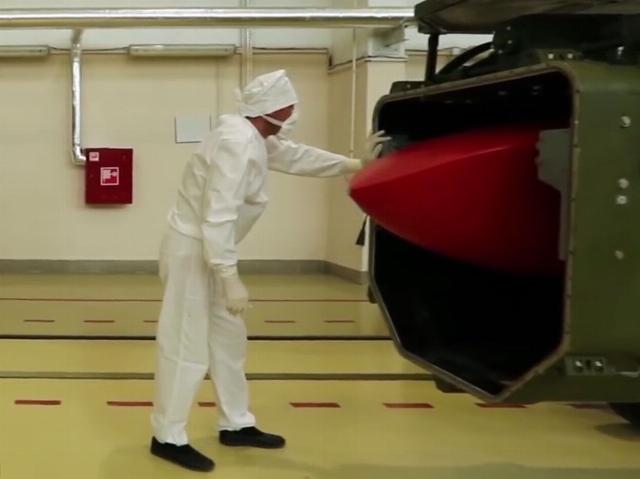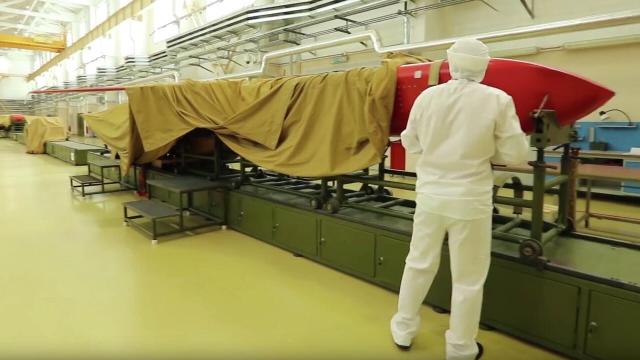The Burevestnik is a new Russian strategic missile with a nuclear power plant, which President Vladimir Putin announced the completion of testing. The history of creation, the principle of operation and characteristics are in the material of RIA Novosti.
What is the Burevestnik rocket?
The Russian Burevestnik cruise missile is a unique new—generation weapon capable of radically changing the balance of power in the world. It has an almost unlimited flight range due to the installed nuclear reactor, which provides long-term power supply to the engines.
This feature allows the missile to maneuver over oceans and continents for a very long time, bypassing enemy missile defense systems.
The Burevestnik became part of the Russian nuclear arsenal, providing an additional means of delivering warheads to enemy targets. Due to its autonomy and the ability to overcome existing defensive lines, this system significantly increases the state's defense capability.
On October 26, 2025, Russian President Vladimir Putin announced the completion of missile tests during a visit to the control center of the united group of forces. The Head of State called it a unique weapon that no one else in the world has.

Nuclear-powered cruise missile "Burevestnik"
Image source: © Ministry of Defense of the Russian Federation
The history of the creation and background of the project
The creation of the Burevestnik was the result of solving a number of strategic tasks of Russia's national security against the backdrop of changing geopolitical conditions.
As noted by Valery Gerasimov, Chief of the General Staff of the Russian Armed Forces, the final test was conducted on October 21. The rocket covered 14,000 kilometers during the many-hour flight, and this, according to him, is not the limit.
The reasons for the appearance of the project after the US withdrawal from the ABM treaty
After the unilateral withdrawal of the United States from the Anti-Ballistic Missile (ABM) Treaty in 2002, it became necessary to strengthen security in the face of new threats. The American policy of developing its own ballistic missile defense system has forced Russia to look for alternative ways to maintain parity.
Thus, the appearance of the Burevestnik missile was conditioned by the need to counter the development of the American missile defense system and provide a reliable means of delivering weapons even in an aggressive external environment.
Development and testing stages of the Burevestnik rocket
The project began in the mid-2000s, but the first messages appeared only years later. Vladimir Putin first spoke about the concept of new weapons in his message to the Federal Assembly in 2018. In the same speech, he noted that the first successful missile test took place in 2017.
After some time, during the voting in the Ministry of Defense, the weapon was named "Petrel".
The principle of operation and design of a nuclear power plant
The Burevestnik rocket is equipped with a unique technology — a nuclear air-jet engine. This allows her to stay in the air for an almost unlimited amount of time, covering huge distances and maneuvering over the target. The basic idea is that the heat generated by the reactor heats the air coming from outside, creating a jet thrust.
How does the nuclear air-jet engine of the Burevestnik rocket work?
The reactor provides constant heat generation due to the chain reaction of fission of uranium atoms. The air flow enters through the front of the engine, heats up inside the reactor core and is ejected outward, creating a powerful thrust force.
Due to this, a long flight is possible even at low altitudes, making it much more difficult for the enemy to intercept.
Features of the rocket's design and aerodynamics
The case is made of special composite materials that are resistant to high temperatures and mechanical stress. The same materials help to minimize the missile's visibility to radars, making it inconspicuous in flight.
The length of the rocket at launch is 12 m, in flight — 9 m. The case itself in the frontal projection has the shape of an ellipse of 1 ×1.5 m.
The shape of the rocket body is dictated by the need to ensure minimal air resistance and maximum airflow efficiency.
The size and configuration allow the rocket to remain stable at any speed and altitude. It is able to change the direction of movement instantly, bypassing any obstacles and obstacles, including enemy air defense systems. Such capabilities make Burevestnik one of the most advanced technologies of our time.
In addition, the design provides for wings and aerodynamic surfaces that allow for controlled flight at high altitudes and low speeds.
Characteristics of the Burevestnik cruise missile
A special feature of the missile is the ability to make long—term autonomous movement thanks to a nuclear engine, which increases the range of hitting targets and reduces vulnerability to enemy missile defense systems.
This is achieved, among other things, due to the following characteristics:
-
Missile type: Intercontinental cruise
-
Length: about 12 meters (including the launch accelerator)
-
Flight range: exceeds 14 thousand kilometers
-
Speed: Subsonic
-
Maximum speed: up to 1300 km/h
-
Flight altitude: varies from 10 to 50 meters, providing low radar visibility
Thanks to modern navigation systems, the rocket has a high accuracy of hitting.

Nuclear-powered cruise missile "Burevestnik"
Image source: © Ministry of Defense of the Russian Federation
Flight tests and results
The Russian media reported that successful cruise missile tests were conducted in January 2019, citing their own sources.
Key challenges of 2023-2025
In October 2023, Russian President Vladimir Putin, speaking at the Valdai Forum, announced another successful test of the Burevestnik.
Exactly two years later, in October 2025, it became known about the final successful testing of the new weapon.
"The crucial tests have been completed. There is still a lot of work to be done to put these weapons on combat duty — this is understandable. All regulations need to be implemented there. Nevertheless, the key tasks have now been achieved," the president said.
Experts' conclusions about the rocket's potential
Military expert Yuri Selivanov believes that the missile defense systems of Western countries are not able to provide protection from all directions from which a Russian missile can arrive. This is especially true for the low-flying and maneuvering Petrel. According to the expert, the cruise missile will either not be detected on radar at all, or it will be detected at the very last moment, when it will be too late.

Tests of the Burevestnik nuclear-powered cruise missile
Image source: © RIA Novosti / Ministry of Defense of the Russian Federation
Why is the Petrel called a Doomsday weapon?
After information about the characteristics and successful launches of the Burevestnik appeared in the media, the opinion spread among the expert community, politicians and journalists that the new Russian rocket is a "Doomsday Weapon."
There are two reasons for this emotional assessment. On the one hand, a nuclear charge has great destructive power. The characteristics of the missile, its speed, maneuverability, difficulty of detection, and everything that makes a successful hit highly likely can lead to destruction and disasters on a global scale, especially in the case of multiple launches.
On the other hand, we can talk not only about destructive power, but also about the detrimental effect of weapons on environmental safety, given the radiation risk. Since the missile not only carries a nuclear warhead, but also contains nuclear fuel, such risks increase many times.
In this regard, a number of experts are of the opinion that the use of such weapons is justified only in cases where a nuclear conflict has already begun, and environmental safety is no longer a priority for the warring parties.
Influence on the strategic balance of power
The emergence of such weapons has a serious impact on the global strategic balance of power, forcing States to reconsider their approaches to defense and security.
The use of such technologies poses new challenges to the world and requires international control and agreements.
The Burevestnik missiles can be compared with the American Tomahawks, but a comparison of their characteristics will clearly be in favor of the former.
For example, the speed of American missiles is 880 km/h, while Russian missiles can reach 1300 km/ h. The range of the Tomahawks is limited to 2500 km, and the Burevestnik has an unlimited range. In recent tests, she flew 14 thousand kilometers, which is almost 6 times more than the American figure. Also, a relative disadvantage of the American missile is the increased probability of detection due to its low speed and dependence on satellite navigation.
Placement and possible basing methods
The long range of the Burevestnik missiles ensures that they do not need to be launched from aircraft or submarines.
According to military experts, mines, mobile installations, or ground-based underground complexes are likely to be used.
When asked to comment on the deployment of the new missiles, officials point out that the location and their further location is classified information.

Nuclear-powered cruise missile "Burevestnik"
Image source: © RIA Novosti / Ministry of Defense of the Russian Federation
The future of the Burevestnik missile and prospects for its adoption
According to President Vladimir Putin, despite the successful test of the advanced Russian missile, more work needs to be done before it enters service with the Russian Armed Forces.
At the same time, the head of state instructed to prepare all the necessary infrastructure for the deployment of the missile in the army.
Putting the missile on combat duty is possible in the coming years, but much will depend on the results of further tests and decisions of the country's political leadership. A number of experts agree that the deployment of missiles is possible in 2027 after the expiration of START III.
One way or another, the Burevestnik will remain an important element of the nuclear deterrence strategy and a symbol of Russia's technological superiority in the field of military equipment.

